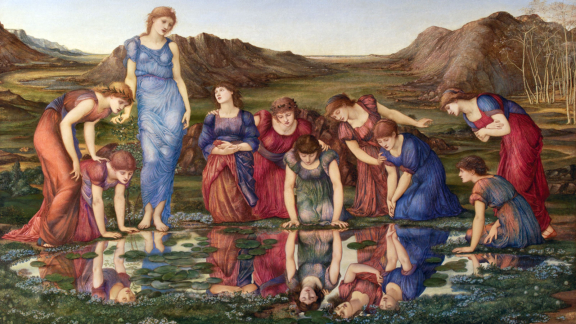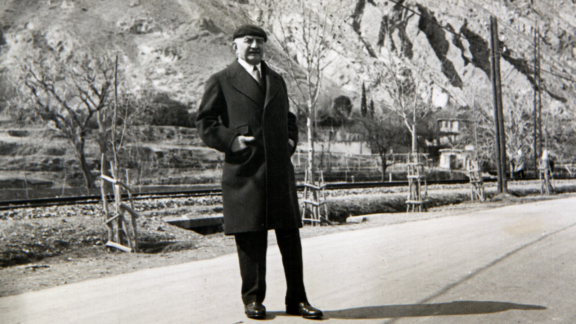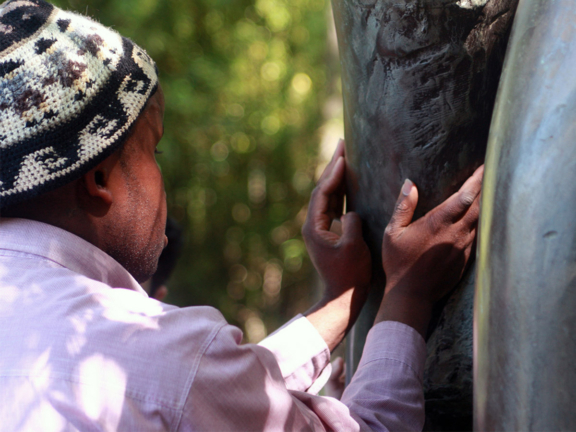
Stories from an Unknown Manuscript
Curator Jessica Hallett shares the creative process behind ‘Power of the Word V. The Emperor’s Gif: Circles of Knowledge’, along with several members of this participatory project.

Curator Jessica Hallett shares the creative process behind ‘Power of the Word V. The Emperor’s Gif: Circles of Knowledge’, along with several members of this participatory project.

In this conference, a panel of international experts talks about portrait painting in the work of Diego Velázquez.

In the fourth episode of the "The Treasure of Kings" series, curator André Afonso talks about the sumptuous offerings made from the Kingdom of Naples to the Holy Land.

Books have always been a privileged means of resistance against oppressive regimes. In this article, curator Ana Maria Campino writes about some of the ‘forbidden books’ from the 18th century that belong to the Gulbenkian Collection.

To mark the 190th anniversary of Sir Edward Burne-Jones’ birth (1833-1898), curator Ana Maria Campino explores the graphic works in the Gulbenkian Collections that relate to the work of the English painter.

In third episode of this series, curator André Afonso discusses some of the gifts from the kingdom of Spain to the Holy Land.

Conservator-restorer Mafalda Fernandes explains the various stages involved in the process of preserving a group of works of art belonging to the Terra Sancta Museum’s collection.

The trophy status of the silver, prolonged almost by definition by their display in the museum, has contributed to a lack of interest in their makers, and the role silverware had in eighteenth century high society dining in Europe.

Among the gifts from Portuguese monarchs, those by King John V stand out. In this video, curator André Afonso discusses some of these objects.

In the first video of this series, curator André Afonso tells us about the works of art sent to the Holy Land, to be housed in its most famous place of devotion: the Basilica of the Holy Sepulchre.

In this text by researcher Vera Mariz, follow Calouste Gulbenkian's trip to Jerusalem in 1934.

The gastronomic habits and preferences of Calouste Gulbenkian in a communication that focuses on the gourmet side of the Collector.

From a library to a gospel book, researcher Vera Mariz sheds light on Calouste Gulbenkian's gifts to the Armenian Patriarchate of Jerusalem.

In the Middle Ages, Catholic texts were populated by themes from Ancient Egypt. Profane literature was also influenced by the imagery of this period, in the transition to the Renaissance. Find out how these connections are reflected in the illuminated manuscripts of the Gulbenkian collection in this text by the curator Ana Maria Campino.

The imagery of Ancient Egypt has always influenced plastic and literary creation in Europe. In this text by conservator Ana Maria Campino, discover the impact of this historical period on 18th century publications.

Whether a festive occasion or a private gathering, mealtimes were extremely important and symbolic in the French court. Curator Ana Maria Campino writes about the representation of these moments in the eighteenth-century books and prints in the Gulbenkian Collection.

The printed book began to appear in the 15th century, progressively replacing manuscript books. However, the coexistence of both, as the medieval period made way for the Renaissance, brought about a mutual influence. Discover the similarities and differences between these two typologies of book in the text by curator Ana Maria Campino.

The «I AM – Inclusive and Accessible Museums» project brought together the Gulbenkian Museum and five European institutions who researched, created and tested pedagogical methodologies and practices aimed at young audiences in vulnerable situations.